These Are Our Top Picks for the Best Wine Regions to Visit Heading into 2024
Editor’s Note: This guide to some of the best wine regions to visit around the world is part of our travel resource series. While both well-known and up-and-coming wine regions each have something unique to offer, this list aims to encompass a variety of regional aesthetics, wine styles, terroirs, and unique travel experiences. Let us know what wine regions you think deserve a mention in the future in the comment section!
Wine is hot right now. Not just because old world wine regions are continuing to crank out delicious juice, but also because a number of new world areas are using innovative techniques, old-school grape varieties, and leveraging seductive terroir to create in-demand travel destinations.
Today, we want to review the best wine regions around the world that are currently worth a visit. This is of course a difficult list to narrow down, but read on to discover what makes these areas so special and why you might consider planning a wine vacation as your next bucket list item. You can also check current deals on flights to many of these destinations here.
IN THIS GUIDE:
- Texas Hill Country
- Colchagua Valley
- Bordeaux
- Rioja
- Marlborough
- Carmignano
- Willamette Valley
- Priorat
- Piedmont
- Mendoza
- Mosel
- Ribera del Duero
- Lavaux
- Barossa Valley
- Paso Robles
- Okanagan Valley
- Stellenbosch
- …and more
Note that we include a number of links within this list that lead out to more detailed articles on many of the regions discussed below. Feel free to click through if any wine region strikes your fancy.
Best Wine Regions of the World & Why
Texas Hill Country, USA
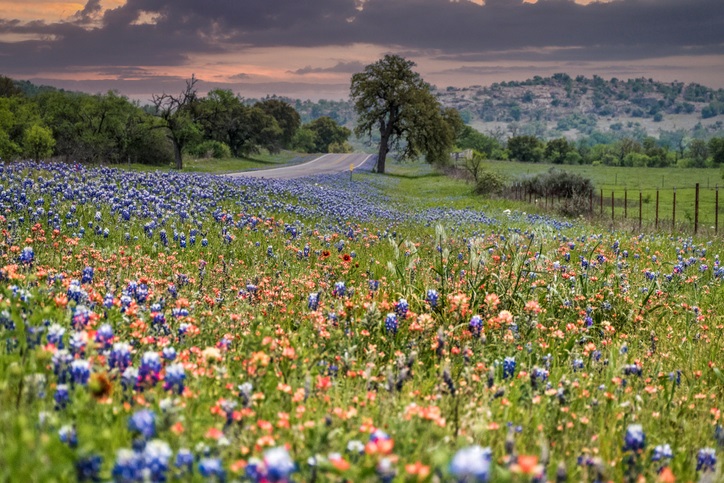
Despite well over 1 million travelers sampling Texas Hill Country annually, it’s still one of the wine world’s best-kept secrets. Texas has 3,500 acres of vineyards and over 500 wineries, according to the Texas Wine and Grape Growers Association. Texas Hill Country itself has over 50 wineries that are spread throughout the region, which happens to be the second-largest AVA in the United States. However, many individuals are not even aware of the region, since most producers only sell their wines within Texas. Word is quickly spreading due to the massive population influx into Austin, which lies only one hour East of the AVA.
RELATED: Best Texas Hill Country Wineries to Visit This Year
This region is relatively young, (less than 30 years old!), however since the early 1990’s a number of innovative producers recognized that the terroir and climate here is conducive to producing great-tasting Spanish and Italian varietals and blends, among others.
There are a few reasons as to why the draw to Texas Hill Country is so great — not only are vintners producing fantastic wine, but the AVA’s proximity to Austin makes it an alluring destination for bachelorette parties, weddings and casual day trips. The drive through the region is beautiful and will have you feeling as though you’ve taken a quick trip over to the Italian countryside in some areas. Expect great food, southern hospitality, and fine wine. There are also some highly-rated and friendly guided tour options to consider.
RELATED: Essential Wine Gifts and Accessories for Wine Travel Enthusiasts
Colchagua Valley, Chile
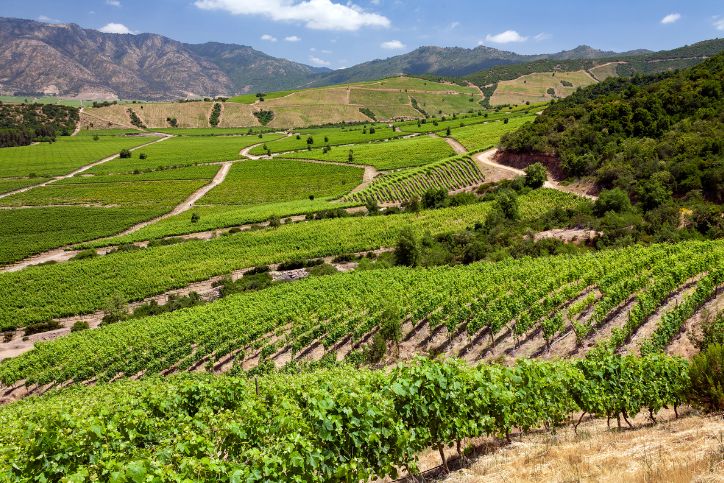
The Colchagua Valley, located within the South-central reaches of the Rapel Valley, is arguably one of the best wine-producing regions in South America. It is located approximately 80 miles, or 130 kilometers from the Chilean capital of Santiago. While Chile as a whole is quickly becoming recognized as one of the best value wine-producing countries in the world, it is select appellations such as Colchagua that are beginning to stand out for their quality red wine production.
READ: A Wine Lover’s Guide to Understanding Chile’s Wine Regions
Wedged between the Pacific Ocean and the Andes Mountain Range, the Colchagua Valley, in particular, offers two distinct micro-climates that are conducive to producing fine Carmenere and Cabernet Sauvignon in particular. Carmenere is currently recognized as Chile’s national wine grape, and no other appellation within Chile, in our opinion, is producing as refined and flavorful Carmenere as vintners within Colchagua. In fact, Carmenere flew under the radar as a blending grape in Bordeaux for years, but it was Chile that successfully harnessed its true expression and made it famous as a single-varietal wine.
The region is still relatively young, and the Viñas de Colchagua — Colchagua’s regional association — wasn’t established until 1999. Today, only about 20 wineries total reside within the valley, making it an ideal location to visit while not being overwhelmed by too many producers.
Bordeaux, France
Bordeaux as a whole is a name that has become synonymous with quality and history in the wine world. It is without a doubt one of the most famous, if not the most famous old world wine region on the planet. Today, it has also become an in-demand tourist destination thanks to the reputation vintners have earned here. It’s become so famous in fact, that recently a wine amusement park was erected in order to celebrate the wines of the region and offer an additional incentive for travelers to come visit.
While there are a range of sub-appellations within the Bordeaux region, it is perhaps easiest to dissect the area by splitting it in two. For the sake of this article, we’ll discuss it as having a Left and Right bank, split in two by the Garonne River.
RELATED: Book These Special Private Bordeaux Wine Tours This Year
The esteemed Left Bank of Bordeaux has garnered significant recognition due to the presence of long-standing wine producers, some of which have been crafting exceptional and highly sought-after red blends for centuries. Esteemed wineries in this region include Chateau Margaux, Lafite, Latour, and others. Characteristically, Left Bank vintners are known to produce blends dominated by Cabernet Sauvignon, often complemented by lesser amounts of Merlot, Cabernet Franc, Petit Verdot, and Malbec.
In contrast, the Right Bank of Bordeaux is celebrated for its wine producers who predominantly create Merlot-driven blends, accompanied by smaller proportions of Cabernet Sauvignon and the other grape varieties previously mentioned.
READ: Best 30 Wineries, Vineyard Resorts & Experiences in Bordeaux
It’s also important to note that Bordeaux winemakers on both the Right and Left banks are producing white wines and sweet wines as well. Some of these producers are equally historic if not more so. Consider booking a guided tour to really immerse yourself in the wine culture of Bordeaux.
La Rioja, Spain
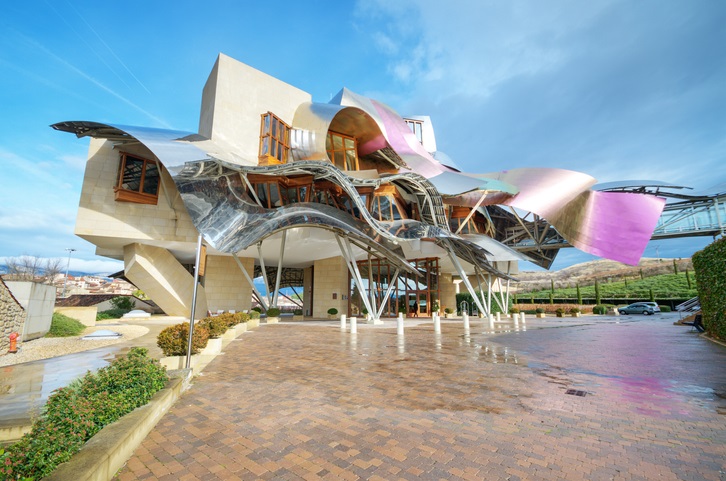
In many ways, Rioja has created an all-encompassing brand for itself. In the US wine market, “Rioja” has become a name that has become synonymous with exceptional craftsmanship, rich red fruit, and just the right amount of spice. Producers within this wine region pride themselves on both ancient and innovative modern wine-making techniques, crafting a range of red and white wine styles that regardless of technique still depict the unique flavors of the region at their cores.
READ: 22 Wineries You Can’t Miss in Rioja Spain
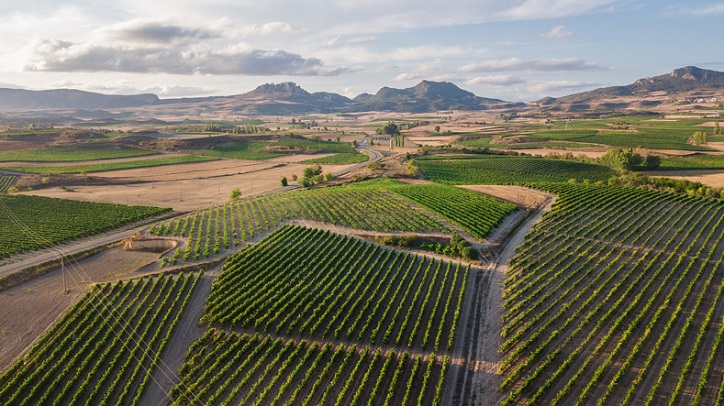
The Rioja DOCa oversees 3 sub-appellations, Rioja Alta, Rioja Alavesa and Rioja Baja (now called Rioja Oriental). Each sub-appellation offers varying degrees of elevation, climate, soil composition and landscapes, making it an ideal wine region to visit to observe the differences in wine styles, production techniques, general culture and exquisite vistas. All of this can be within your reach simply by renting a car and driving through the casual countryside.
Marlborough, New Zealand
Marlborough has emerged in recent years as one of the world’s premier new world wine-producing regions — especially when it comes to Sauvignon Blanc production. If you like medium-bodied white wines with refreshing acidity, complex mineral tones, fresh citrus, and tree fruit notes with slight hints of vegetable flavors, you need to visit Marlborough.
RELATED: 7 Best Wine Regions in New Zealand To Visit
Compared to some of New Zealand’s other wine regions, Marlborough is the most famous despite its relatively small geographical stature. It’s also the home of the Marlborough Wine Research Centre, which happens to be New Zealand’s premier research facility for viticulture. You can be sure producers here take their jobs seriously, but you can expect a laid-back greeting if you were to knock on any cellar door.
So the wine is good here, we know that. But New Zealand also offers travelers one of the most beautiful landscapes in the world. In fact, if you were to travel through the North and South Islands, you could potentially experience all four seasons throughout your visit. Just watch Lord of the Rings and you’ll have a pretty good sense of what we mean.
Carmignano, Tuscany
Tuscany’s Carmignano wine region, nestled in the heart of central Italy, is a captivating destination for travelers seeking an authentic wine experience. With a rich history that dates back to the Etruscan civilization, Carmignano has been producing wines since 804 AD (that we’re aware of). The region’s wines were highly regarded by the famous Medici family during the Renaissance, and the region itself was granted DOC status in 1975 before being elevated to DOCG in 1990, showcasing its dedication to high-quality wine production.
RELATED: The Best Wine Tours in Tuscany to Book This Year
Carmignano is known for its unique blend of grape varieties, with Sangiovese being the primary grape, offering characteristic red fruit and earthy flavors. The region also stands out for its historic use of Cabernet Sauvignon and Cabernet Franc, which were introduced in the 16th century. The resulting wines are full-bodied and elegant, with a delightful balance of fruit, tannins, and acidity.
As Winetraveler’s explore the region, you’ll be captivated by the breathtaking scenery of the rolling Tuscan hills, adorned with vineyards, olive groves, and cypress trees. The picturesque landscape is further enhanced by medieval villages, historic castles, and ancient churches that dot the countryside, offering a serene backdrop for wine tasting and exploration.
The Carmignano region is also renowned for its mouth-watering cuisine, which emphasizes the use of fresh, local ingredients. Traditional Tuscan dishes such as ribollita, pappa al pomodoro, and bistecca alla fiorentina can be enjoyed alongside Carmignano wines, creating a sublime dining experience.
RELATED: A Foodie’s Romantic Itinerary for Visiting Tuscany
One of the most appealing aspects of the Carmignano wine region is the intimate, family-owned wineries that offer visitors an authentic, personal connection to local winemakers. This close-knit atmosphere allows travelers to learn about the passion and craftsmanship behind each bottle of wine. If you’re set on visiting the region, be sure to stop by and say hello to our friends at Capezzana winery, which offers world-class Super-Tuscan wines and an unmatched level of hospitality in the area.
Additionally, Carmignano’s proximity to Florence makes it a convenient destination for those visiting the famous city. A short drive will transport visitors from the art, history, and architecture of Florence to the serene and captivating world of Carmignano’s wine culture.
Willamette Valley, Oregon
The Willamette Valley spans approximately 150 miles north to south in the northwestern corner of Oregon and currently hosts over 500 wineries spread across a number of sub-appellations. If you’re a Pinot Noir fan, chances are you’ve heard that Willamette is one of the world’s premier young regions focusing on this grape variety. Currently, over 14,000 acres are dedicated to Pinot Noir production throughout the valley. Smaller acreage consisting of Pinot Gris (Grigio), Chardonnay, and Riesling can also be found.
READ: The Perfect Itinerary For Visiting Willamette Valley Oregon
Wedged between the Cascade Mountains and the Coast Range, this relatively cool climate region has successfully carved out a name for itself for its beauty and relaxed atmosphere. Winemakers are happy to greet guests, offering low-cost tastings and in-depth tours of their facilities and production techniques. Many of which are small operations producing incredibly refined small-lot varietal wines. There’s a rusticness here that makes one feel at ease, and simply driving through the valley without even tasting wine will leave you in awe. You can even tour vine acreage on horseback in some locations.
RELATED: The Best Wineries to Visit for Wine Tasting Across the Willamette Valley
Priorat, Spain
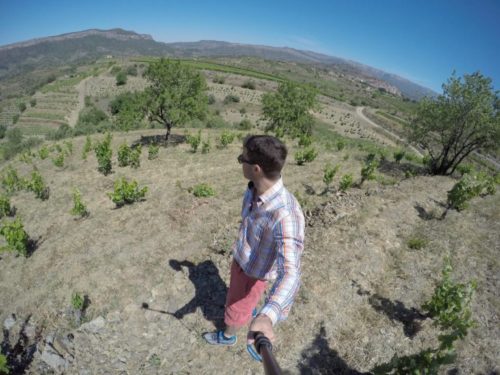
Our team had the pleasure of visiting Priorat recently in the Spring just as the Garnacha vines were beginning to bud. This region is exceptionally beautiful and ancient. You can go from tasting wine directly on the vineyard, visiting an ancient monastery to climbing to the top of an ancient Moorish town on a precipice.
READ: Here’s a Practical Itinerary For Exploring Priorat
That’s all a blast, but it’s the wines in particular that stand out to us. In fact, Priorat is the only other Spanish wine region that falls under the classification of DOCa — meaning the quality controls and production here really don’t get much better. The terroir and climate here help to yield wines of rich complexity, and the soil itself is largely made of ancient volcanic elements and schist, which forces the vines to work hard to grow. All of this ultimately enhances the complexity and flavor composition of the wines. The vines are very old, and they produce smaller more concentrated grape clusters.
Wine has been made in Priorat as early as 1100 AD. As you drive through the region, you can see the remnants of ancient vines, ruins and terraced plantings along the hillsides. This place is truly magical, somewhat remote yet easy to access by train from Barcelona.
Piedmont, Italy
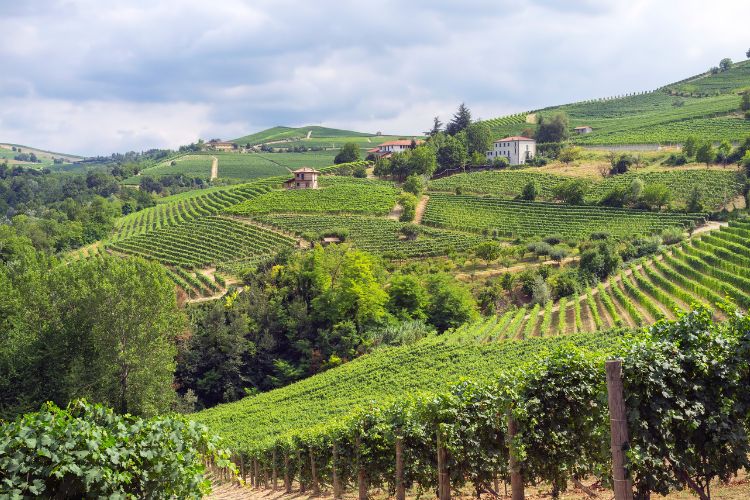
Tucked within the enchanting hills of northwest Italy, the Piedmont wine region is loaded with breathtaking landscapes, ancient history, and world-class winemaking. With its rolling vineyards, snow-capped Alps, and charming Italian villages, Piedmont is a haven for wine enthusiasts and travelers alike, yearning to uncover the secrets of its celebrated sub-regions: Barolo, Gavi, and Brunello.
RELATED: Exciting Piedmont Wine Tours to Reserve This Year
The first stop on our Piedmont adventure is Barolo, affectionately known as the “King of Wines and the Wine of Kings.” Here, the Nebbiolo grape rules supreme, producing wines with an unmatched complexity and elegance. As you wander through the labyrinth of vineyards, you’ll be enchanted by the medieval castles and the captivating stories of the families who have been tending to these vines for generations. When sipping a glass of Barolo, prepare for an explosion of flavors, including roses, cherries, and truffles, with subtle hints of spice and leather. Depending where you’re staying, there are a variety of guided experiences available. If you’re arriving or staying in Milan, there are private guided full-day trips to the Piedmont region we recommend that handle all of the logistics.
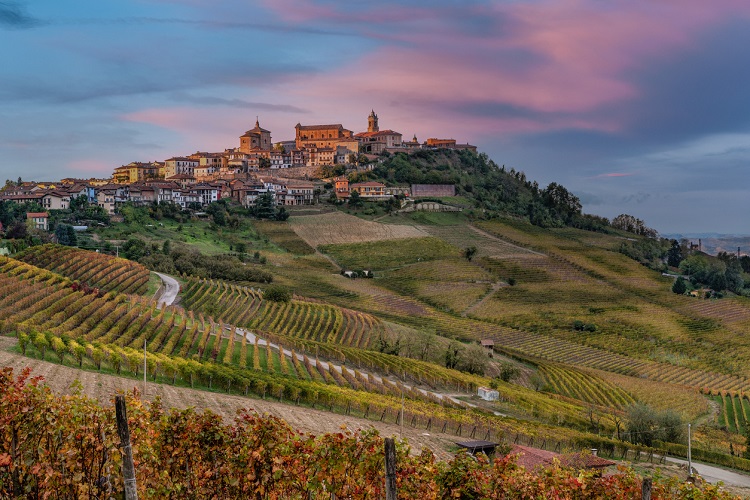
As we continue our journey through Piedmont, we mustn’t overlook the enchanting sub-region of Barbaresco. Situated just a stone’s throw from Barolo, Barbaresco shares a deep connection with its regal neighbor, both producing remarkable red wines from the Nebbiolo grape as well. However, Barbaresco has its own story to tell, with distinct characteristics that set it apart from its illustrious sibling.
In the embrace of the lush Langhe hills, Barbaresco’s vineyards are blessed with a slightly milder climate and more moderate soils compared to Barolo. This difference leads to a slightly earlier ripening of the Nebbiolo grapes, imparting a unique elegance and finesse to the resulting wine. A Barbaresco wine is often considered more approachable in its youth compared to Barolo, yet still boasts impressive aging potential.
Next, venture to the sun-kissed hills of Gavi, home to the exquisite Cortese grape. This underrated gem produces white wines that are delightfully crisp, light, and fragrant. Picture yourself in a quaint Italian trattoria, savoring the delicate aromas of green apple, lemon zest, and almond blossoms, as you enjoy a chilled glass of Gavi di Gavi, perfectly paired with a plate of fresh seafood or creamy pasta.
While there are still lesser-known subregions to explore, head to the picturesque region of Brunello, where the Sangiovese grape transforms into the illustrious Brunello di Montalcino. This full-bodied, tannic red wine is renowned for its aging potential and depth of flavors, with notes of dark fruit, tobacco, and earthy undertones. As you stroll through the ancient village of Montalcino, you’ll find yourself immersed in a world of history and culture, surrounded by stunning panoramic views of the Tuscan countryside.
Travelers to Piedmont will not only be captivated by the wine, but also by the myriad of activities and experiences that await them. Embark on a guided tour of family-owned wineries, where you’ll learn about the centuries-old traditions and techniques that have shaped this region’s winemaking. Or, opt for a leisurely bike ride or hike through the verdant vineyards while truffling hunting, soaking in the breathtaking scenery and stopping for impromptu tastings along the way.
For the foodies, indulge in Piedmont’s rich culinary scene, where you’ll find a harmonious fusion of traditional recipes and modern creativity. Savor the flavors of local dishes like Agnolotti del Plin, a delicate pasta filled with roasted meats, or the iconic white truffle-laden Tajarin, all while sharing stories with friendly locals.
Accessing Piedmont is easier than ever, thanks to convenient transportation options. The region is well-connected to major Italian cities such as Milan and Turin, with regular trains and buses available. Alternatively, fly into Turin-Caselle or Milan-Malpensa airports and rent a car to explore the region at your leisure.
Mendoza, Argentina
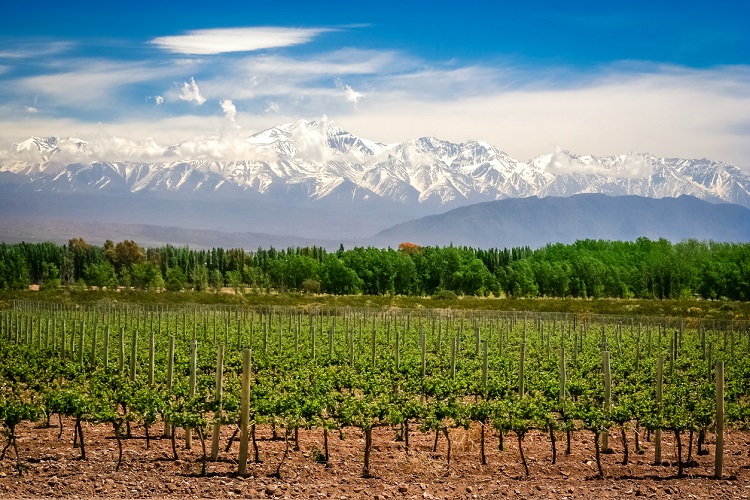
Known as the “Sun and Wine Province” of Argentina and located at the foothills of the Andes, Mendoza is on our radar as a favorite region due to one particular grape: Malbec. Despite Malbec being an old world grape variety harvested for centuries in Bordeaux and other French regions as a blending grape, it is the Argentines who have had the most success in getting it to best express itself as a single varietal wine. In fact, many French producers have since moved to Argentina to break new ground with Malbec production techniques.
RELATED: The Best Wineries and Tours in Mendoza Argentina
Argentina has a long tradition of cattle ranching, with vast grasslands called “pampas” that are perfect for raising high-quality, grass-fed livestock. This has led to a culinary culture that celebrates beef in various forms, from juicy steaks to slow-cooked asado. The Mendoza region, in particular, has embraced this tradition and is known for its skill in preparing mouthwatering meat dishes.
The meat cuisine and Malbec wines from Mendoza complement each other wonderfully, creating a harmonious culinary experience. The robust flavors and rich textures of grilled or slow-cooked meat work beautifully with the full-bodied, tannic nature of Malbec wines. Malbec’s dark fruit notes provide a delightful contrast to the savory flavors of local meat dishes. This balance is further enhanced by Malbec’s moderate acidity, which helps to cleanse the palate between bites while refreshing the taste buds.
Mosel, Germany
The Mosel wine region is a haven for wine aficionados and travelers looking for a truly immersive and memorable experience. The region’s exceptional grape varieties, fascinating history, mesmerizing scenery, and scrumptious cuisine create a compelling case for visiting this extraordinary wine destination.
One of the most remarkable aspects of the Mosel wine region is its grape varieties, with the region being particularly renowned for its Riesling. The combination of a cool climate, steep vineyards, and slate-rich soils lends itself to producing delicate, aromatic, and elegant Rieslings, which have become synonymous with the Mosel region. The area is also home to other grape varieties such as Müller-Thurgau, Elbling, and Pinot Noir, offering wine lovers a diverse range of flavors and styles.
RELATED: Mosel Wine Region: Wine Tasting, Wineries & Tours for 2023
The scenic beauty of the Mosel wine region is undeniably captivating, as the Mosel River meanders through steep vineyards and charming, historic villages. The awe-inspiring landscape is characterized by terraced vineyards clinging to the hillsides, offering breathtaking views and photo opportunities for visitors. The serenity and natural splendor of the region provide a perfect backdrop for wine tasting and exploration.
Wine production in the Mosel region has a long and storied past, with its origins dating back to Roman times. The region has grown and prospered over the centuries, earning a reputation as one of Germany’s premier wine-producing areas. The region’s rich history is evident in its many historic wineries, medieval castles, and ancient monasteries, providing visitors with a fascinating glimpse into the past.
The culinary delights of the Mosel region are yet another reason for travelers to visit this enchanting wine destination. The region’s cuisine emphasizes the use of fresh, local ingredients, with dishes like Sauerbraten (marinated roast beef), Zwiebelkuchen (onion tart), and Reibekuchen (potato pancakes) showcasing the area’s culinary traditions. These mouth-watering dishes can be expertly paired with the region’s wines, creating an unparalleled gastronomic experience.
Ribera del Duero, Spain
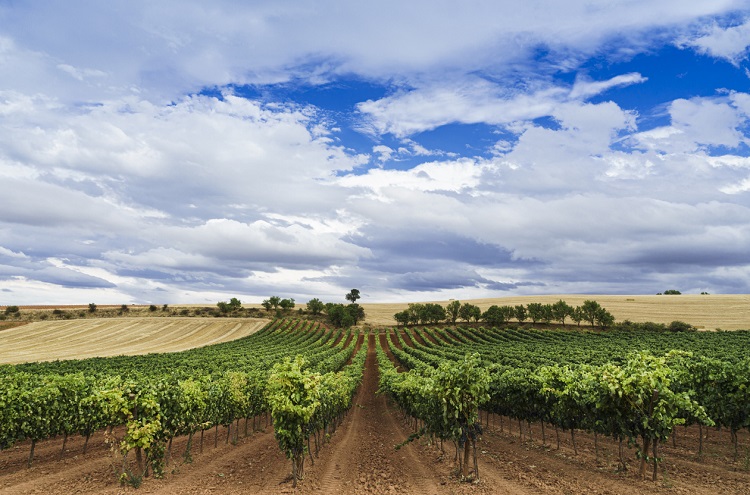
While it may not hold the prestigious classification of DOCa as both Rioja and Priorat do, Ribera probably should. To native Spaniards, especially those who live in Madrid, Ribera isn’t just another Spanish wine region, it’s one of two choices they typically make when deciding what wine to drink at night. Many Spanish restaurants only serve either Ribera or Rioja when you look at the menu.
RELATED: Ribera del Duero Wine Region: 2023 Visitor’s Guide
This is all for good reason — it offers a different take on barrel-aged Tempranillo and Spanish red blends. As opposed to Rioja where the wines are traditionally a bit spicier and red fruit-forward, Ribera red blends tend to be more fruity, fuller-bodied and loaded with black and blue fruit. Since our first samplings of Ribera, some of our team now actually prefer these reds over many others from Spain. So apparently does Prince Charles, who is said to purchase his red wines exclusively from the vintner Vega Sicilia.
This region is both beautiful and ancient. Wines have been made here for over 2,000 years since the Romans first inhabited the area. Today, travelers can journey along the now famed “Golden Mile,” stopping and tasting along the Duero River through the center of the region for fantastic and intimate wine tasting and culinary experiences.
Lavaux, Switzerland
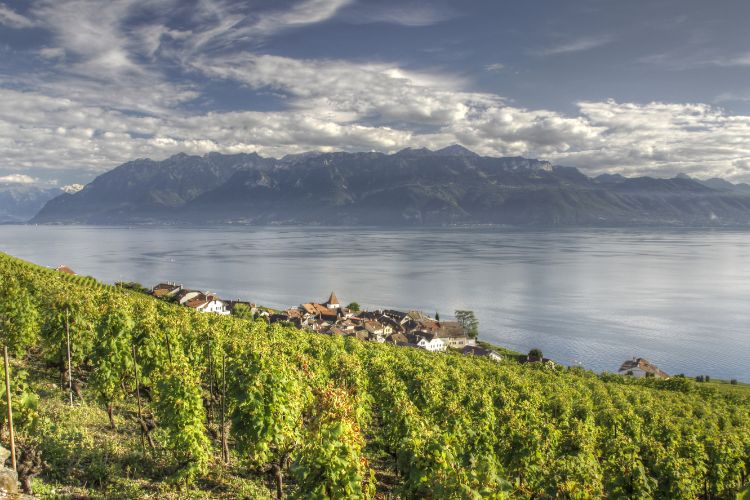
It’s not every day that you hear about a wine region that’s so beautiful it has been given a UNESCO World Heritage designation. The region spans 800 hectares, with the majority of vines being planted along the northern banks of Lake Geneva on steep terraces for over 30 kilometers. Lavaux is actually a sub-appellation within the larger area of the Canton of Vaud.
RELATED: Learn All About Swiss Wines and Wine Regions
All told, Blauburgunder (which is Pinot Noir) and Chasselas (a light-bodied, crisp white variety), account for about 60% of grape production within Switzerland. The elevation, cool and consistent micro-climates, and layout of terraced vineyards are highly conducive to producing great quality wines that you’ve probably never tried before. That’s because most Swiss wine never leaves the country — only a small percentage of it is exported to Germany. That’s a shame, because it’s damn good. So, you’ll just have to go visit the region, stop by the cellar doors of friendly winemakers, and sit and drink at any of the small intimate restaurants and pubs along Lake Geneva. Take a look at our regional guide below to not only access the region efficiently but also for our list of favorite wineries and local tour operators.
RELATED: How to Go Wine Tasting and Hike Lavaux’s Terraced Vineyards
Barossa Valley, Australia
Australia’s Barossa Valley, situated in South Australia, is a captivating wine region that offers visitors a unique blend of history, grape varieties, picturesque scenery, and delicious cuisine. As an epic wine destination, there are several reasons why wine enthusiasts and travelers should consider visiting Barossa Valley.
The region’s history is deeply rooted in European immigration, as it was founded in the 1840s by German and British settlers who brought their winemaking traditions with them. Barossa Valley quickly became a prominent wine-producing area and has since evolved into one of Australia’s most renowned wine regions, thanks to its diverse microclimates and rich terroir.
Barossa Valley is best known for its bold and powerful Shiraz, which is considered one of the finest expressions of this grape variety in the world. The region’s warm climate and varied soils contribute to the development of intense fruit flavors, smooth tannins, and rich textures in its wines. In addition to Shiraz, Barossa Valley also produces excellent Cabernet Sauvignon, Grenache, Riesling, and Semillon, offering a diverse selection of wines for every palate.
The scenery of Barossa Valley is truly enchanting, with rolling hills, sprawling vineyards, and charming villages that reflect the region’s European heritage. The landscape is adorned with historic stone buildings, churches, and quaint cottages, giving visitors a sense of stepping back in time. The natural beauty of Barossa Valley provides a picturesque backdrop for wine tasting and exploration, as well as a tranquil escape from the hustle and bustle of city life.
RELATED: Top Wineries and Tours to Consider when Visiting the Barossa Valley
Barossa Valley’s cuisine is an enticing blend of traditional Australian fare and European influences, with a focus on fresh, local ingredients. Visitors can indulge in dishes such as Barossa roast pork, smoked trout, and regional cheeses, which perfectly complement the bold flavors of the region’s wines. The valley is also home to a thriving food and artisan scene, with local markets and gourmet food shops offering a taste of the region’s bountiful produce. Additionally, Barossa Valley offers a wide range of accommodations, from charming bed and breakfasts to luxury resorts, ensuring that every traveler can find a comfortable place to rest after a day of wine tasting and exploration.
Paso Robles, California
In recent years, California’s Paso Robles region has garnered attention for its exceptional Cabernet Sauvignon and Zinfandel wines. Nestled along the Central Coast, roughly equidistant from Los Angeles and San Francisco, Paso Robles is a wine lover’s paradise waiting to be discovered.
While Cabernet Sauvignon and Zinfandel have helped put Paso Robles on the map, the region boasts a diverse range of grape varieties that cater to a variety of palates. The area’s unique terroir, characterized by warm days, cool nights, and diverse soil types, allows winemakers to craft a wide array of high-quality wines, including Rhône varietals like Syrah and Grenache, as well as lesser-known gems such as Tempranillo and Petit Sirah.
Travelers venturing to Paso Robles will not only be enticed by the impressive wines but also by the region’s picturesque landscapes and welcoming atmosphere. Visitors can explore the numerous boutique wineries and tasting rooms dotted throughout the rolling hills, each offering their own distinct character and charm. Additionally, the region’s burgeoning culinary scene and vibrant arts community add further allure for those seeking a well-rounded, enriching experience.
READ: 10 Best Paso Robles Wineries and Vineyards To Visit
The downtown area is also beautiful and intimate, with a number of boutique shops and restaurants the casual traveler should be content to stop at. Travelers can also sample a wide variety of wines at tasting rooms that dot the downtown area hosted by nearby producers. If you decide to visit Paso Robles, be sure to explore San Luis Obispo and all it has to offer on your next trip to Central California. The drive between the two cities typically takes around 30-40 minutes via US-101, depending on traffic.
Okanagan Valley, Canada
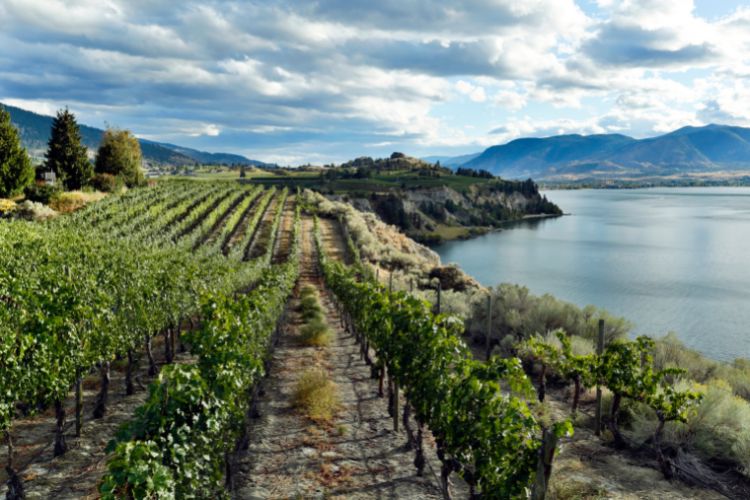
For one to truly experience all that British Columbia has to offer, you’d need to take a drive through all 7 of the Okanagan Valley sub-appellations. That’s because each sub-appellation has its own unique terroir, wine styles and gorgeous scenery. Perhaps best known for its Pinot Noir production, the Okanagan region of British Columbia is Canada’s most famous wine-producing region. Unfortunately, US consumers won’t be able to find many of these beautiful wines in the states due to stringent liquor and licensing laws currently enacted within Canada. Again, you’ll just have to visit the region yourself.
RELATED: Wineries in Okanagan Valley with the Best Views
It’s worth the trip, considering that British Columbia as a whole offers picturesque mountain views, crisp clean air, remote mountain roads and vine acreage that stretches for miles through both the lowlands and highlands.
In addition to Pinot Noir, be sure to sample Chardonnay, Riesling, Pinot Blanc, Pinot Gris, and even Viognier throughout the region. All of these are cooler climate varietals that have seen dramatic success locally. Lastly, let’s not forget to sample the Ice Wine coming out of Okanagan, a unique and very sweet style of wine that British Columbia has also become famous for. This wine is made by allowing the grapes to freeze on the vine late into the growing season, essentially ridding the grapes of water and allowing the remaining juice to become highly concentrated with sugar.
Stellenbosch, South Africa
There are a few reasons why we’re including Stellenbosch on this list. First, because the wine coming out of here is fantastic. Second, it’s a viticultural hub, hosting arguably one of the most prestigious viticultural schools in the world — the University of Stellenbosch. Third, Stellenbosch hosts over 150 wineries and tasting locations, making it one of the premier tourist destinations in South Africa. Fourth, it’s the second oldest settlement in South Africa behind Cape Town, making it a very historic district.
RELATED: South Africa Itinerary: How to Uncork the Best in 2 Weeks
The landscape is largely made up of expansive fields loaded with long, rolling hillsides, granite soil, and mountain-scapes. Wines that are worth mentioning are often Cabernet Sauvignon dominant, and some producers have also had great success in producing beautiful Bordeaux-style red blends. In addition, travelers should most certainly stop and sample any iteration of Pinotage that they can find. Pinotage is considered South Africa’s national grape, a variety that was crafted as a cross between Pinot Noir and Cinsault. There’s a unique story behind the variety, and it was actually invented by a University of Stellenbosch viticulture professor.
RELATED: 7 Exceptional Wine Regions in Europe by the Sea
Bottom Line
Are we missing a few amazing wine regions in this list? Yup. Unfortunately, I could spend the rest of my life writing about regions I love and still probably leave a few out. That being said, please feel free to leave your thoughts on your favorite regions and what makes them special to you in the comments.
You are reading “The Best Wine Regions to Visit Around the World” Back To Top
what are the best wine regions to visit, most beautiful wine regions: ocean-front wine regions in Europe
If you enjoyed this guide, consider joining the Facebook Group to interact with other Winetravelers and for travel inspiration around the world, and be sure to follow along with us on Twitter and Instagram.
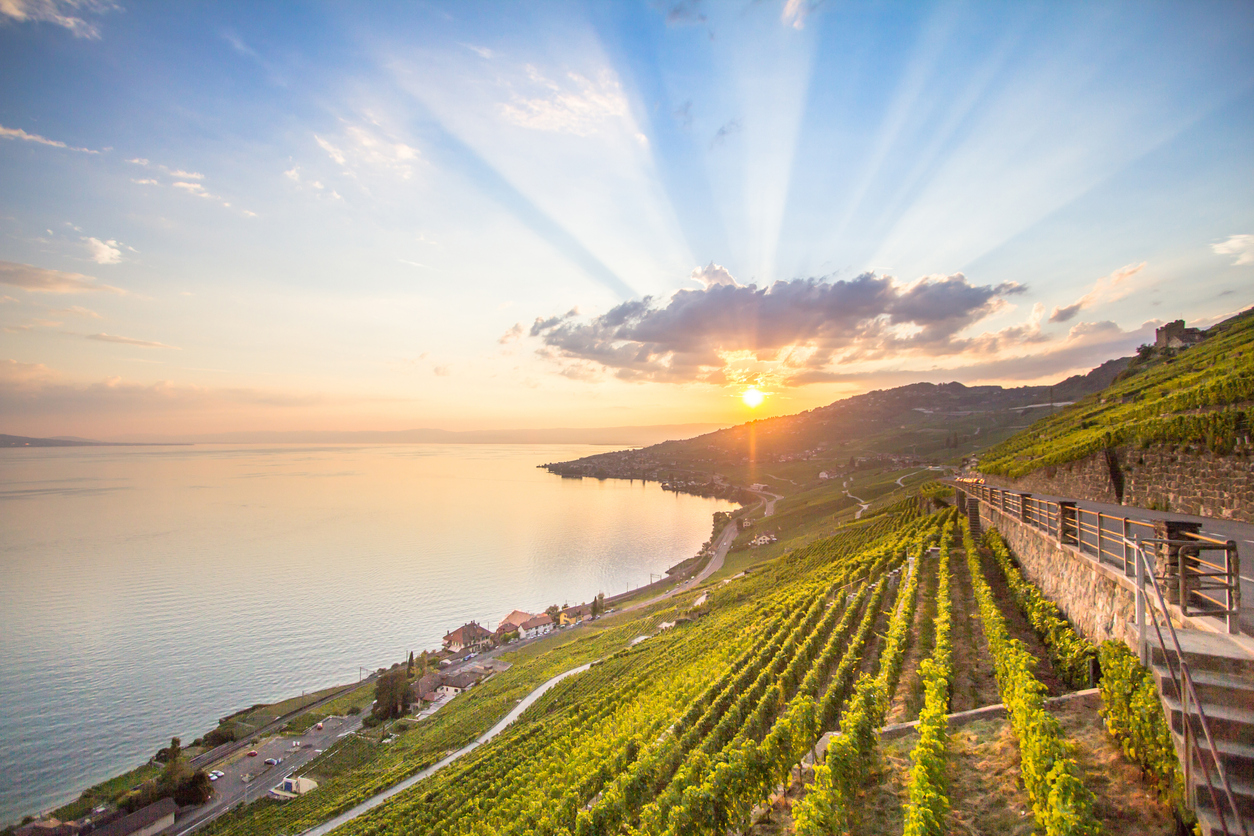
[…] Tour the local vineyards and enjoy the charming beauty of the surrounding areas as you visit this world-renowned wine region. […]
Not one mention of Italy???? Barolo, Brunello, Amarone, the white wines of Campania, Aglianico from Basilicata, upcoming Sicily. Why….?….
Probably because we’ve mentioned many of those regions in some of our other “best of” lists :). And we just talked about Sicily here: https://www.winetraveler.com/italy/sicily-itinerary-catania-etna-taormina/
Just search “Italy” on the free Winetraveler App
South Australia has the best red wine in the world (Barossa, McClaren Vale, Coonawarra, Clare Valley etc, and some of the better whites also. Surprised it is not mentioned on this list.
As mentioned, the list is difficult to narrow down. Everyone has opinions on what the “best” regions are. We’ve covered Australia excessively on this platform. Just do a quick search on the App.
[…] Another website listed the valley between its 13 best places to visit in the world. […]
[…] Another website listed the valley among its top 13 places to visit in the world. […]
[…] Another website listed the valley among its top 13 places to visit in the world. […]
[…] Another website listed the valley among its top 13 places to visit in the world. […]
Greg, I love you man but you don’t drink enough Piedmont 😉